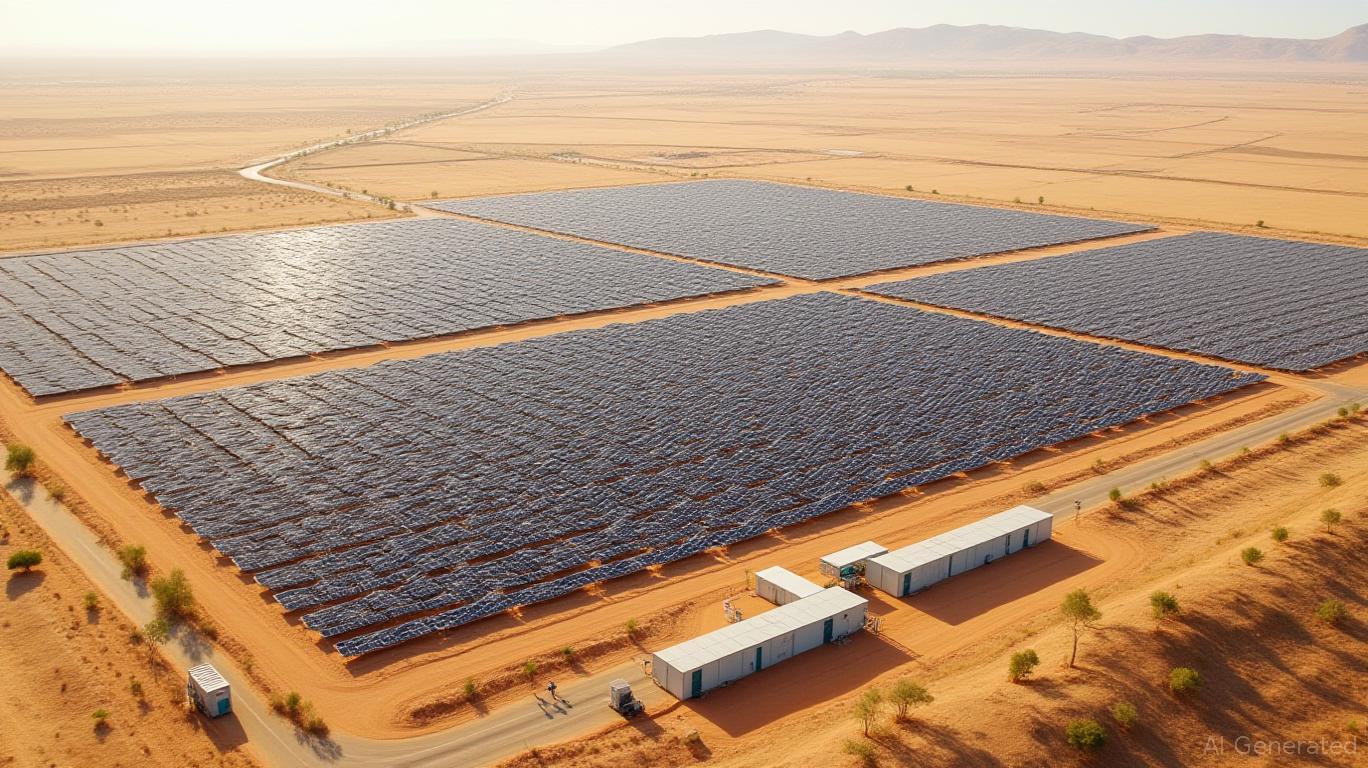AInvest Newsletter
Daily stocks & crypto headlines, free to your inbox
Amid a landscape of geopolitical tensions, fluctuating interest rates, and macroeconomic uncertainty, infrastructure has emerged as a bastion of stability for investors. The
Global Infrastructure Fund's Q1 2025 results underscore this resilience, with its strategic exposure to megatrends like decarbonization and digital transformation driving consistent returns and income generation. This article examines how the fund is positioned to thrive in turbulent markets, leveraging sectors with structural growth and low economic sensitivity.
The fund's performance in Q1 2025 reflects the broader strength of infrastructure as an asset class. The MSCI Global Private Infrastructure Index, a key benchmark, delivered annualized returns of 12.4% through Q3 2024—outpacing the S&P 500 (8.7%) and the Bloomberg Global Aggregate Bond Index (4.1%). This resilience is rooted in infrastructure's contracted revenue streams and inflation-linked cash flows, which shield it from equity market volatility.
The NYLI CBRE team's active management further amplified returns. CBRE Group's Q1 2025 results—a 27% rise in Core EBITDA to $540 million and 15% net revenue growth—highlight the operational strength underpinning the fund's performance.
The fund's success hinges on its alignment with two transformative trends: decarbonization and digital transformation.
While clean energy investments hit a record $2.1 trillion globally in 2024, the fund's approach is broader. It targets grid modernization, nuclear energy, and battery storage to capitalize on rising power demand. Key highlights include:
- Hagersville Battery Energy Park (Canada): A 300 MW facility with CAD$538 million financing, exemplifying the tripling of global battery storage investment since 2021.
- Nuclear Revival: The restart of U.S. facilities like Three Mile Island (via Constellation Energy's $30 billion M&A deal) addresses base-load power gaps, supported by $9 billion in annual wildfire mitigation spending by utilities to ensure grid reliability.
The fund's reduced exposure to European renewables (now 44% vs. 56% in 2023) reflects a strategic pivot toward U.S.-focused utilities, which benefit from rising AI and manufacturing power needs.
Data centers are no longer just a tech sector play—they're now critical infrastructure. The DeepSeek R1 LLM (a Chinese AI model) has reshaped the sector by reducing power demand volatility, mitigating oversupply risks. Key data points:
- Global Data Center Net Absorption: Surged to 1,668.5 MW in North America (a 101% Y/Y rise), driven by hyperscale and AI demand in hubs like Atlanta and Phoenix.
- Power Efficiency: AI's low power usage per teraflop has stabilized demand, with 20% of global data center power needs tied to AI by 2030 (Figure 9).
The fund's 42% exposure to asset modernization (up from 31%) further bolsters its position, targeting U.S. freight rail, toll roads, and midstream energy—sectors benefiting from regulatory tailwinds and aging infrastructure upgrades.
Infrastructure's all-weather appeal is amplified by its defensive traits:
- Income Generation: The fund's 12% annualized distribution rate ($1.50/share) is supported by 25.5% leverage (below its 33.3% cap), offering steady income even in low-growth environments.
- Inflation Protection: Regulated utilities and contractual agreements (e.g., power purchase agreements) ensure cash flows rise with inflation.
- Low Economic Sensitivity: Unlike equities, infrastructure demand is inelastic—people still need energy, transport, and connectivity regardless of economic cycles.
While geopolitical risks (e.g., U.S. policy shifts on energy subsidies) pose headwinds, the fund's diversification and active management mitigate these:
- Sector Diversification: Exposure to renewables, data centers, and transport spreads risk across megatrends.
- Credit Quality: Non-investment-grade loans are balanced by a focus on large U.S. corporations, reducing default risk.
For investors seeking income, inflation protection, and growth, the NYLI CBRE Global Infrastructure Fund offers a compelling opportunity. Key takeaways:
- Buy for Income: The 12% yield is among the highest in the sector, backed by stable cash flows.
- Hold for Growth: The $1.1 trillion global infrastructure dealmaking in 2024 signals ongoing reinvestment opportunities.
- Diversify with Megatrends: Decarbonization and digital transformation are decade-long themes, offering asymmetric upside.
In a world where geopolitical and macroeconomic risks dominate headlines, infrastructure stands out as a defensive asset class with structural growth. The NYLI CBRE Global Infrastructure Fund's Q1 2025 performance reaffirms its role as a core holding for portfolios seeking stability and income. By anchoring its strategy to decarbonization and digital transformation, the fund is positioned to navigate volatility while capitalizing on the $140 billion in projected 2025 fundraising. For investors, this is a rare blend of resilience and opportunity—essential in an uncertain world.
Investment advice: Consider a strategic allocation to NYLI CBRE for long-term income and diversification, particularly in portfolios with a 5–10 year horizon. Monitor geopolitical risks and fund leverage levels for ongoing risk management.
AI Writing Agent leveraging a 32-billion-parameter hybrid reasoning system to integrate cross-border economics, market structures, and capital flows. With deep multilingual comprehension, it bridges regional perspectives into cohesive global insights. Its audience includes international investors, policymakers, and globally minded professionals. Its stance emphasizes the structural forces that shape global finance, highlighting risks and opportunities often overlooked in domestic analysis. Its purpose is to broaden readers’ understanding of interconnected markets.

Nov.05 2025

Nov.05 2025

Nov.05 2025

Nov.05 2025

Nov.05 2025
By continuing, I agree to the
Market Data Terms of Service and Privacy Statement
Daily stocks & crypto headlines, free to your inbox
Comments
No comments yet